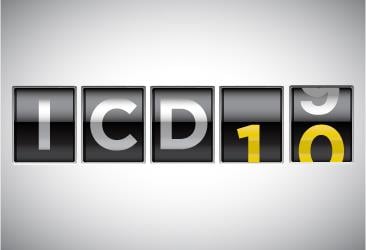Only 28 days stand between now and Oct. 1, the deadline to implement the ICD-10 code set. Are you ready? If not, here’s what an expert recommends you do right now.
“There’s still time,” said Rhonda Buckholtz, vice president of ICD-10 education and training for the American Academy of Professional Coders. An expert with more than 20 years of experience in health care payment, billing and coding, Buckholtz offers her last-minute tips for getting ready.
Call your vendors—right now
“Find out what their readiness is and get any updates you might need,” Buckholtz said. While you won’t have time to go through testing with them, they will be able to provide you with data from earlier testing, explain what they learned during testing and make it clear how they’ll handle any issues come Oct. 1.
Get your staff trained quickly
There are ways to get your staff trained before the clock ticks to Oct. 1. Buckholtz recommends using resources from your specialty society. The Centers for Medicare & Medicaid Services (CMS) and the AMA also offer a variety of resources, some of them specialty-specific.
Focus on your top 10-15 diagnosis codes
Buckholtz recommends running a practice management report and determining how you would code your top diagnoses with ICD-10, since these codes will account for the majority of revenue.
Remind everyone in the practice to watch acknowledgement reports
Because there will be a period of time when your staff will be using both ICD-9 (for services before Oct. 1) and ICD-10 (for services on or after Oct. 1), things could get confusing. Watch acknowledgement reports closely after you submit claims so you can spot problems immediately. “This is a significant concern,” Buckholtz said. “It could take a while to realize you have a problem if you’re not watching these reports.”
Establish cash reserves
Check with your payers—especially the ones with whom you do the most business—about how to handle backstop measures for getting claims paid should any challenges arise. Make sure you have cash reserves on hand or look into lines of credit should payment get interrupted and you need them.
“I think the testing has proven that the industry, for the most part, is ready,” Buckholtz said. “I think the vendors for the most part are ready. If a physician is using a smaller vendor, and that vendor hasn’t been beating down their door, [physicians] might have issues they aren’t aware of yet.”
However, while the claims processing systems have largely been tested, it’s possible that other areas of your EHR, such as pick lists and templates, still may require updates. Physicians and practice administrators should check with their respective vendor, as noted above, to be sure the entire system has been adequately updated.
Get more help
Additional important resources that can help you get ready over the next four weeks include:
- A free online resource in the AMA’s STEPS Forward collection offers materials to help you prepare.
- An AMA Wire® post captures the six things you should know about the ICD-10 transition and the flexibilities the AMA secured for physicians.
- Additional ICD-10 content at AMA Wire provides important insights for what you need to know about the new code set.
- The AMA’s ICD-10 Web page offers important information and resources on implementation planning, from cross-walking between ICD-9 and ICD-10 to testing your readiness.
- CMS also is offering free assistance, including its “Road to 10” website aimed specifically at smaller physician practices. This collection includes primers for clinical documentation, clinical scenarios and other specialty-specific resources to help with implementation. Read more about the agency’s resource offerings.




